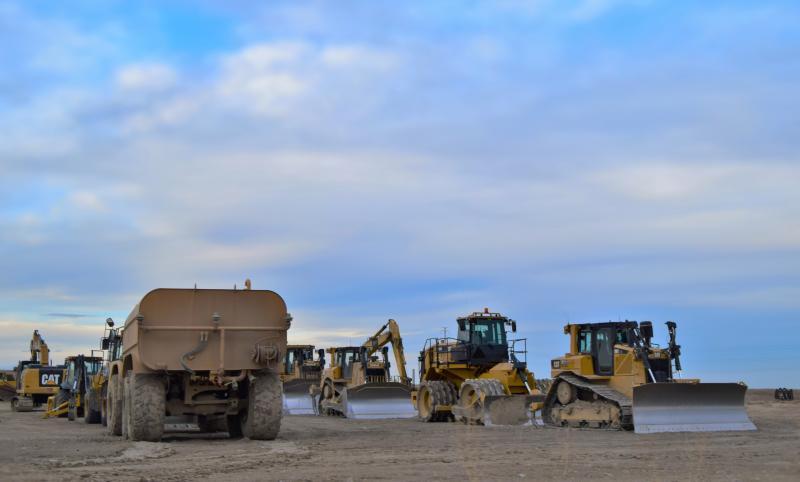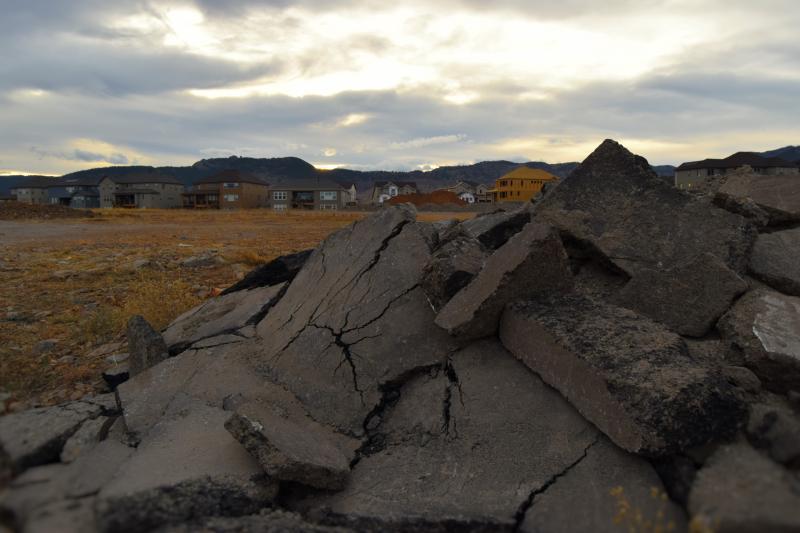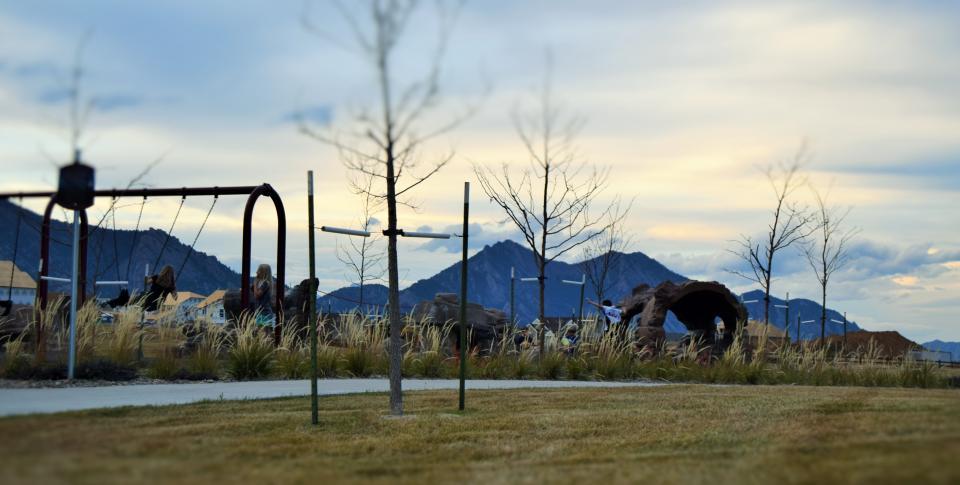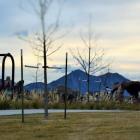Whilst Rocky Flats National Wildlife Refuge near Denver, Colorado, is today a spectacular nature reserve, its history is inextricably entwined with the US military industrial complex. Dig beneath the rolling prairie grasslands and a complex socioenvironmental history is made evident by the traces of contamination that are hidden beneath the soil and in the health challenges that have been experienced by the local community.
This legacy began at the moment of inception of the Rocky Flats plutonium pit manufacturing plant in 1952. Plutonium pits or triggers provide a catalyst for the detonation of nuclear weapons, and include a beryllium starter mechanism. They are not a “clean” item to manufacture, but rather a toxic product that creates toxic by-products. Current US legislation protects the public from harm through on-site and off-site environmental regulation. However, 1950s environmental concerns were less pressing, as Cold War patriotism took precedence and public awareness of the socioenvironmental effects of nuclear weapons was limited. The Cold War precipitated an arms race that the Rocky Flats facility was designed to bolster by rapid production of this essential item for nuclear warfare.
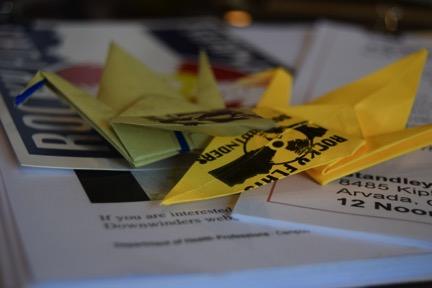
The inaccessibility of available information about public and environmental health risks and outcomes has motivated community groups such as Rocky Flats Downwinders and Rocky Flats Right to Know to fight for more transparent and useful information about health risks, if any.
The inaccessibility of available information about public and environmental health risks and outcomes has motivated community groups such as Rocky Flats Downwinders and Rocky Flats Right to Know to fight for more transparent and useful information about health risks, if any.
This photo was taken by Stephanie Malin.
This work is used by permission of the copyright holder.
Rocky Flats underwent a gradual transformation from a central component of the US military-industrial complex to the ordered parkland of the National Wildlife Refuge over the course of the 1990s and 2000s. Parallel to this transition, the greater space surrounding the refuge began to be redeveloped into residential property by the Terra Causa Capital and GF Properties Group, a subsidiary of the Southern Ute Indian Tribe. The new residents of the freshly constructed village of Candelas are commuters to the nearby city of Denver, and are unaware of the legacy of contamination that surrounds Rocky Flats.
The first environmental challenges emerged five years after the plutonium pit manufacturing site became functional in 1952. Major fires occurred in 1957 and 1969, whilst on other occasions unsealed barrels of radioactive waste silently leached and dispersed across the surrounding hinterland. When traces of plutonium and elevated levels of radioactive tritium were discovered by researchers in local reservoirs in 1972, the US Congress purchased a buffer zone around the site to prevent public access. Plutonium was also discovered within topsoil beyond the original buffer by scientists, to which Congress responded by expanding existing buffer zones. The site used sociopolitical technologies of control to prevent public recognition of pollution, namely the limitation of public access and the creation of harsh consequences for on-site whistle-blowers. A climate of precarious national security and the threat of Soviet repercussions meant that this seemed like appropriate action at the time, and so Rocky Flats remained clandestine.
However, the local community became perturbed by this lack of transparency from Rocky Flats. Local community activism gradually began to occur at Rocky Flats as concerns emerged surrounding on-site safety in the 1980s. Large-scale organized protests and sit-ins were undertaken, and the abundance of unanswered and unanswerable questions reached an apogee that culminated in a large-scale protest by thousands, with 320 arrests, in August 1989. This protest was dismissed by the establishment as unnecessarily subversive and damaging to the nuclear defense sector. However, it is difficult to stifle the truth permanently, and information about the environmental impacts of Rocky Flats was leaked to the United States Environmental Protection Agency (EPA). This precipitated an investigation and a case was developed by FBI agent Jon Lipsky with the help of anonymous on-site informants. Operation Desert Glow in 1989 was the final outcome of this investigation, and the site was secretly infiltrated by FBI agents who discovered extensive contamination of water and land. The US justice department charged Rocky Flats’ proprietors, Rockwell International, with violations of the Resource Conservation and Recovery Act and the Clean Water Act in 1992. Rockwell International had allowed polychlorinated biphenyls (PCBs), chromic acid, beryllium, and radionuclide emissions—all chemicals with serious compound implications for human and environmental health—to be released into the environment.
The location became a Superfund site as part of a national program where contaminated places are selected for investment. Billions of dollars were pumped into the deconstruction and remediation of the landscape, a process completed in 2006. Yet, information about the site remains elusive for the lay public. The Colorado Department of Public Health and Environment has site records available on their website (see, for example, here or here); other records can be accessed by the public through mechanisms such as the Freedom of Information Act request or the Colorado Open Records Act (those not permanently sealed from the Grand Jury investigation, that is).
Our study respondents report that the hundreds of pages of technical and scientific information provided by organizations like the Colorado Department of Public Health and Environment (CDPHE)—but not translated by them for the lay public—are ultimately inaccessible to people without a significant background in fields like chemistry or toxicology. The information is not useful in terms of accessing transparent data about the site, its history, or any residual contamination that may present risks. This information could be made more accessible if, for example, the CDPHE organized events, such as community meetings, to translate data for citizens and answer their questions.
This is an issue of procedural inequity that environmental justice scholars have noted in many other cases of contested illness. In cases of contested illness, affected members of the public perceive connections between their illnesses and exposure to environmental toxicants such as plutonium, but medical professionals and/or state or federal agencies deny either the existence of their disease (as with Gulf War Syndrome) or deny an environmental health component to the disease (such as asthma rates increasing in relation to air pollution).
Therefore unresolved concerns about health and wellbeing within the local community are still undeniably present. Community campaign leader, Tiffany Hansen, has voiced the challenges associated with developing a good study. She said:
It was a challenge to connect with former residents, there was no support, the research available was limited and difficult to find, and there was no organized advocacy… Since launching our [Rocky Flats Downwinders awareness] website in 2015, I have heard from thousands of people, many like myself, who felt there was a strong connection between our health problems and the close proximity to the facility… I hear from people whose entire families are sickened, many lost loved ones, others are fighting or lost the fight for their lives.
Her observations echo the contested yet compelling evidence of rare cancers associated with radiation exposure that are clustered within the communities surrounding the site, and that embody their experiences of exposure. Somehow, the internationally significant socioenvironmental legacy of Rocky Flats has been redacted. Whilst the wildlife flourishes across Rocky Flats, the local communities continue to suffer from its hidden toxic past.
Postscript: This article has been edited and re-posted on 2 November 2017 to clarify the authors’ reporting on procedural equity and the nature of health-related information publicly available to concerned citizens. This clarification was made after the Colorado Department of Public Health and Environment requested the article be retracted due to the authors’ critiques of the availability of information that citizens find transparent, useful, and applicable to their health and daily lives.
How to cite
Alexis-Martin, Becky, and Stephanie Malin. “An Unnatural History of Rocky Flats National Wildlife Refuge, Colorado.” Environment & Society Portal, Arcadia (Summer 2017), no. 25. Rachel Carson Center for Environment and Society. doi.org/10.5282/rcc/7975.
ISSN 2199-3408
Environment & Society Portal, Arcadia
 This work is licensed under a Creative Commons Attribution 4.0 International License.
This work is licensed under a Creative Commons Attribution 4.0 International License.
2017 Becky Alexis-Martin and Stephanie Malin
This refers only to the text and does not include any image rights.
Please click on an image to view its individual rights status.
- Ackland, Len. Making a Real Killing: Rocky Flats and the Nuclear West. Albuquerque: University of New Mexico Press, 2002.
- Havlick, D. G. “Disarming Nature: Converting Military Lands to Wildlife Refuges.” Geographical Review 101, no. 2 (2011): 183–200.
- Iverson, Kirsten. Full Body Burden: Growing Up in the Nuclear Shadow of Rocky Flats. New York: Broadway Books, 2013
- Krey, P. W., and E. P. Hardy. Plutonium in Soil Around the Rocky Flats Plant. (No. HASL—235). New York: New York Operations Office (AEC), NY Health and Safety Lab, 1970.
- Krey, P. W. “Remote Plutonium Contamination and Total Inventories from Rocky Flats.” Health Physics 30, no. 2 (1976): 209–14.
- Malin, Stephanie A. The Price of Nuclear Power: Uranium Communities and Environmental Justice. New Brunswick, NJ: Rutgers University Press, 2015.
- Kuletz, V. L. The Tainted Desert: Environmental and Social Ruin in the American West. New York: Routledge, 2016.


